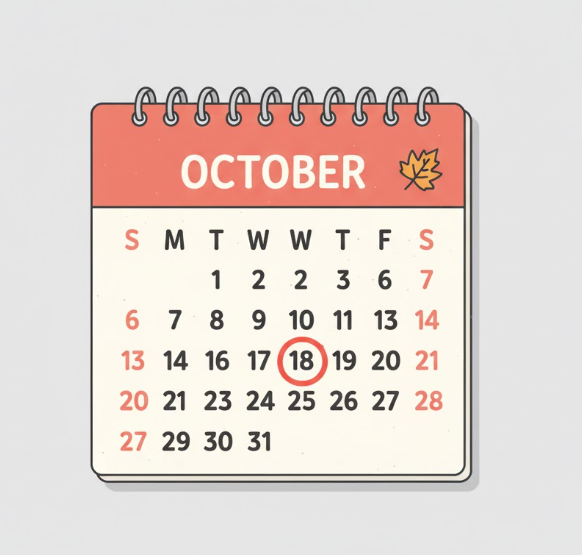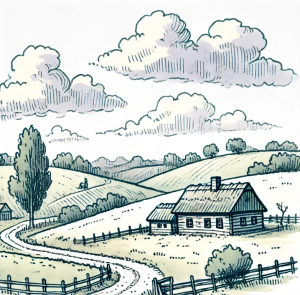
What the Holidays Reveal About Suicide Risk
On a snowy Christmas morning, emergency rooms around the world tend to be quieter than usual. But just a week later, on New Year’s Day, that calm can break. Across dozens of studies, researchers have found that suicide rates spike when the calendar turns—a stark reminder that the transition from one year to the next can bring not only resolutions but risk.
A new systematic review and meta-analysis published in Frontiers in Public Health looked at over 2.1 million deaths across 28 studies from 14 countries to answer a question that has haunted mental health professionals for decades: Are the holidays truly a dangerous time for suicide?
The results overturn some old myths—and raise new challenges for prevention.
🎁 The Myth of the “Christmas Suicide Surge”
For generations, the idea that suicide peaks around Christmas has persisted in popular culture and even in news reporting. Yet the data tell a different story.
The study found that Christmas Day is actually one of the safest days of the year for suicide. Across 17 studies, suicide rates were 17% lower than on regular days (Risk Ratio = 0.83).
Similarly, Christmas Eve showed a mild protective effect, with fewer self-harm and suicide-related behaviors (RR = 0.74). Researchers suggest that the sense of belonging, family togetherness, and emotional uplift around Christmas can buffer against crisis—at least temporarily.
Key Insight: Christmas appears to offer a short-term “social shield” against suicide, possibly delaying—but not eliminating—risk.
🎆 The New Year’s Spike: A Global Pattern
That protection fades quickly. Just one week later, on New Year’s Day, suicide risk jumps 33% above average (RR = 1.33)—making it the only consistent holiday hotspot across countries in the meta-analysis.
This pattern held true from Sweden to Mexico, from England to the United States. The trend was remarkably stable across decades of data (1969–2019).
Researchers point to several possible explanations:
- Emotional rebound: People may delay suicidal behavior through Christmas, only to act when the holiday ends.
- High expectations and self-reflection: The “fresh start” narrative of New Year’s can amplify feelings of failure, regret, or hopelessness.
- Alcohol consumption: Drinking often spikes during New Year’s festivities—a known risk factor for suicide and impulsive acts.
- Reduced service availability: With many clinics, hotlines, and hospitals short-staffed over the holidays, help may be harder to reach when it’s most needed.
❤️ Valentine’s Day: No Clear Pattern, but Subtle Risks
Valentine’s Day produced no statistically significant increase in suicide deaths. However, the evidence for self-harm and suicidal behavior was mixed. Some studies showed small increases among young adults, especially those experiencing rejection or loneliness.
Key Insight: While Valentine’s Day isn’t a population-level suicide hotspot, it may still represent an emotional trigger for certain groups—particularly youth.
🧠 Behind the Numbers: The “Broken Promise Effect”
Psychologists have long described what’s called the “broken promise effect.” During culturally charged times like Christmas or New Year’s, expectations for joy and connection run high. When reality fails to meet those expectations—because of isolation, grief, or economic stress—the disappointment can deepen despair.
The authors note that this social contrast might explain why Latin American countries like Mexico and Colombia showed slightly elevated suicide rates even on Christmas, where family-centered celebrations and religious norms intensify emotional expectations.
This reinforces the idea that context matters: holidays that unite some communities can isolate others.
🔬 What the Study Adds
The research team, led by Ta-Chuan Yeh and colleagues from National Defense Medical Centre in Taiwan, used a rigorous meta-analytic approach—aggregating decades of observational data to identify global patterns.
Their review went beyond suicide deaths to include self-harm and suicide-related behaviors (SHSB)—an important early warning signal for prevention.
They also examined study quality, country differences, and time trends, finding that the New Year’s Day risk has actually grown stronger in recent decades. This suggests that modern social and economic pressures may be intensifying the vulnerability window.
🏥 What This Means in Practice
For public health agencies, health systems, and community programs, timing matters. The holiday season isn’t uniformly dangerous—but its rhythms shape risk in predictable ways.
Action Steps for Local Health Departments & NGOs:
- Plan for post-holiday vulnerability. Increase crisis hotline staffing and emergency mental health coverage in the week after Christmas.
- Use targeted messaging. Shift awareness campaigns from Christmas to New Year’s, when risk rises.
- Promote healthy resolutions. Encourage self-compassion and realistic goal setting instead of perfectionistic “new year, new me” pressure.
- Engage faith and community leaders. Leverage social networks that strengthen belonging and check in on isolated individuals.
- Track self-harm patterns. Local hospitals and health departments can monitor data for seasonal spikes to better allocate outreach resources.
🚧 Barriers & System Challenges
The study also exposes system-level blind spots.
- Staff shortages: Many mental health and emergency workers take time off during holidays, creating thin coverage at a critical moment.
- Cultural variability: Findings are based mainly on Christian-majority, high-income countries. Other cultures may have different “temporal hotspots.”
- Data lag: Death certification delays on holidays may obscure the real timing of suicide incidents.
Building real-time surveillance systems and cross-sector coordination could help overcome these issues.
🌅 Looking Ahead: Turning Awareness into Action
If Christmas gives us hope, New Year’s reminds us how fragile that hope can be. The findings underscore a deeper truth: suicidality is time-sensitive. By mapping risk not just to individuals but to the calendar, public health can act before crises peak.
Future research could explore:
- How economic stress, loneliness, and alcohol use intersect with holiday risk.
- Whether digital and faith-based outreach can buffer post-holiday vulnerability.
- How different cultural calendars (e.g., Lunar New Year, Ramadan, Diwali) shape emotional cycles globally.
💬 Conversation Starters
- How might your agency plan outreach for the post-holiday period?
- What local data could help identify your community’s seasonal risk windows?
- Could faith or cultural leaders play a role in bridging the support gap during holidays?
🎯 Key Takeaway
Christmas offers a brief reprieve—but New Year’s Day is when the real danger begins. As one year ends and another begins, public health systems must prepare not just for celebration, but for connection, compassion, and care.



